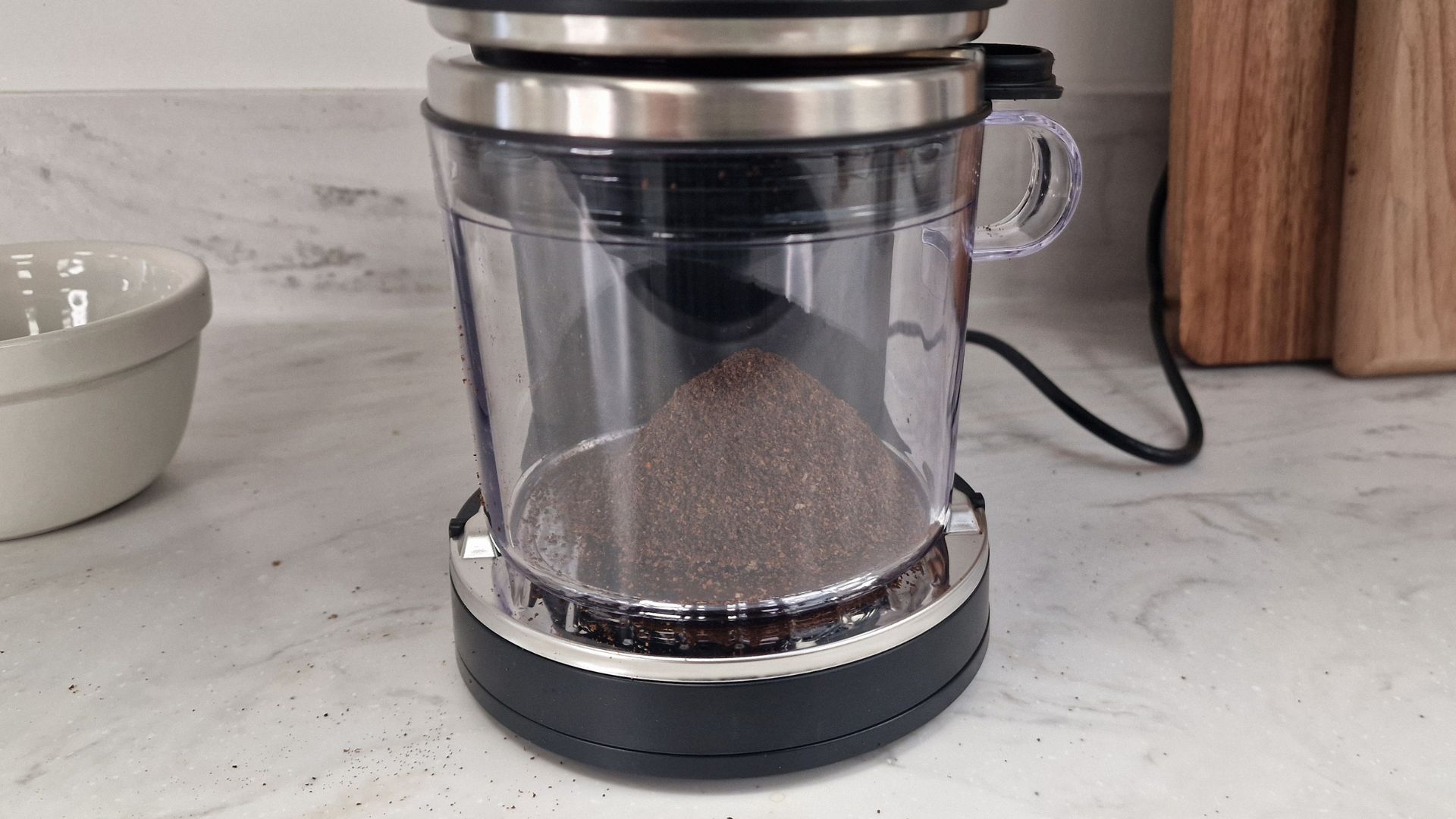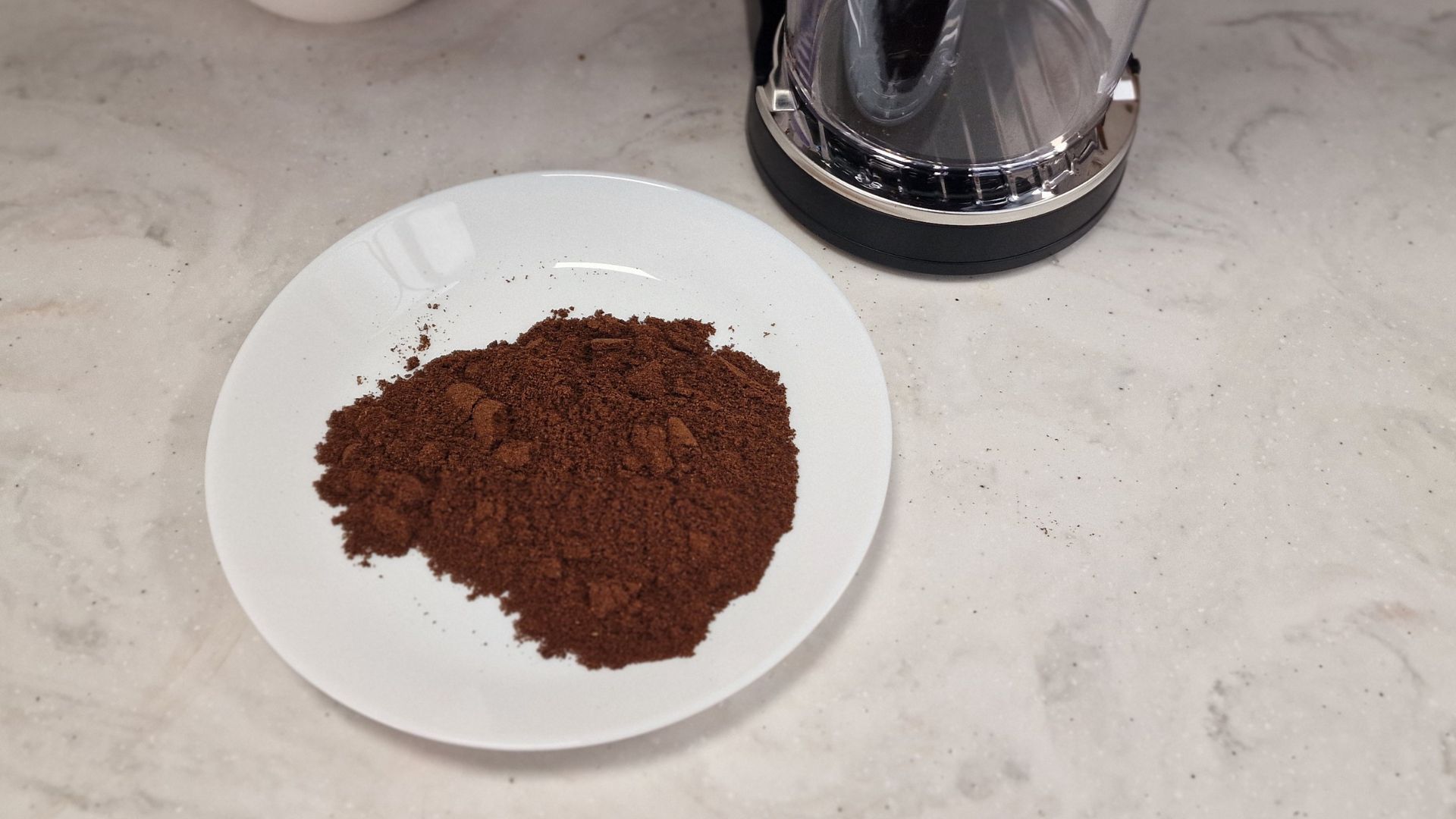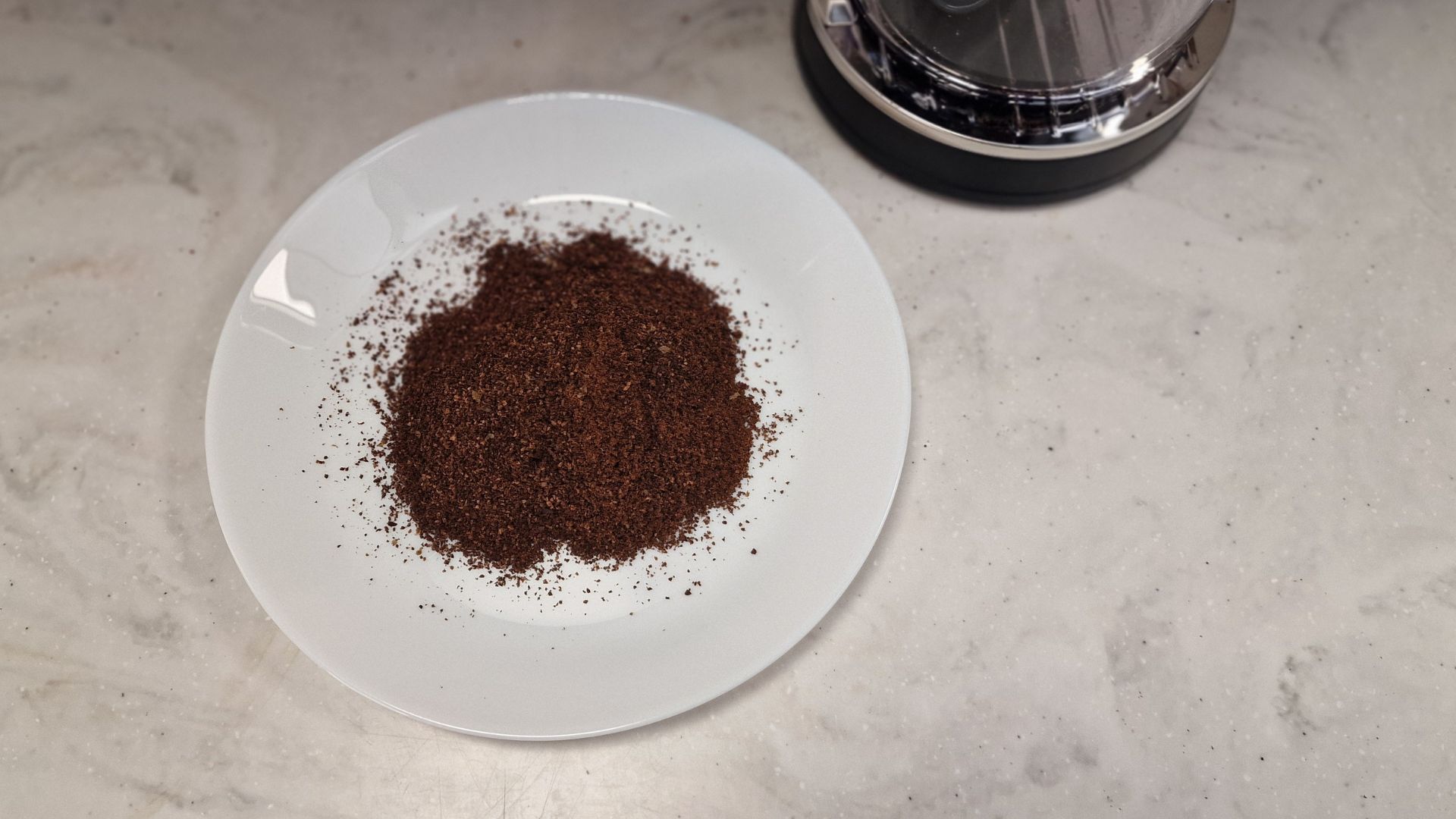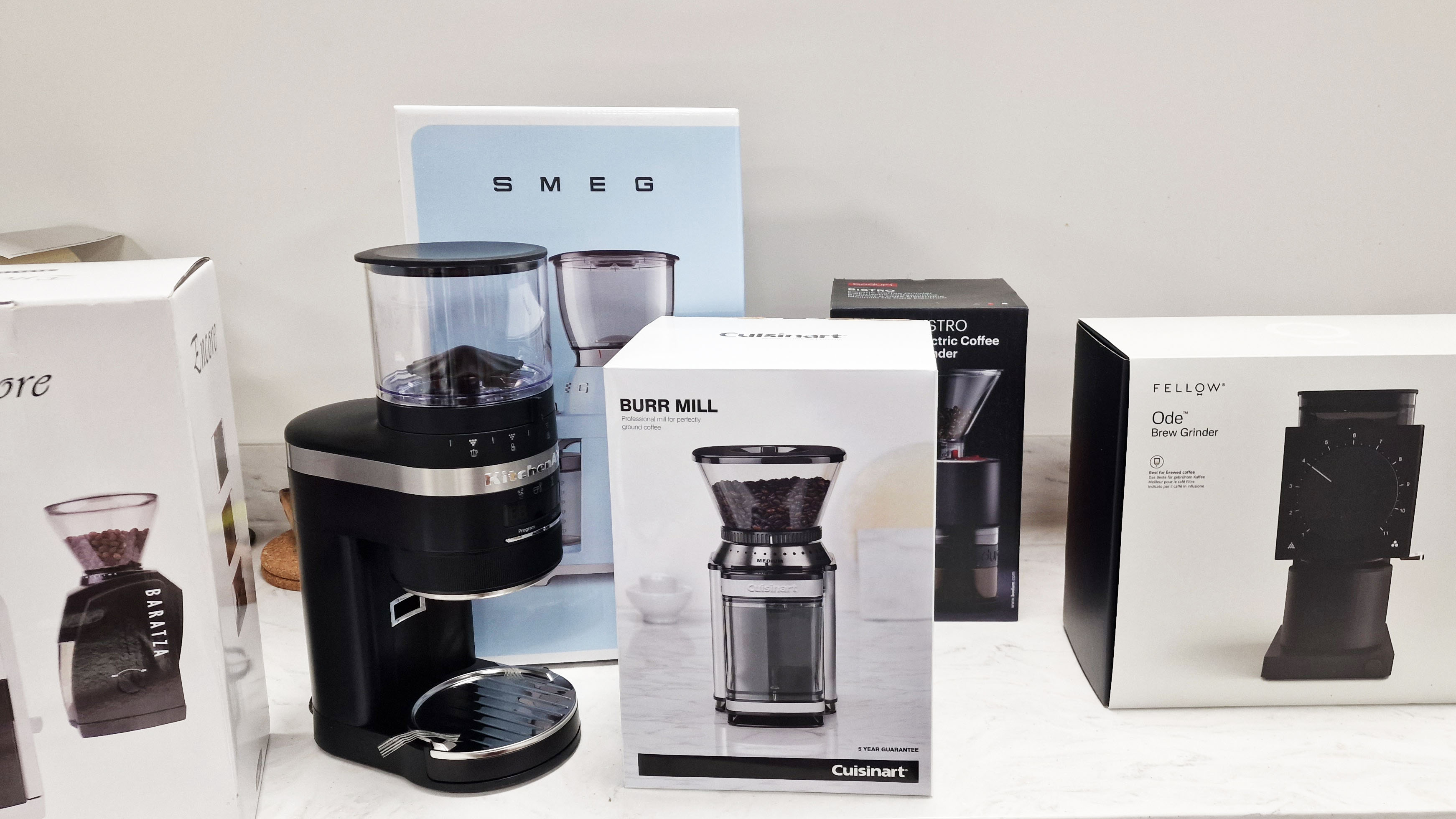
If you're searching for the best coffee grinder, KitchenAid might not be the first brand you consider. Coffee-specific brands like Baratza, Eureka and Fellow are popular among enthusiasts for providing consistent grounds that can be used to make a variety of coffee drinks, but the KitchenAid Burr Coffee Grinder is one of the best options I've tested.
One of the coolest features in this coffee grinder is its LED display, which is very user-friendly and perfect for beginners. I put the KitchenAid Burr Coffee Grinder to the test in the Tom's Guide test kitchen, putting it through its paces at a range of grind sizes and volumes. I can safely say that at a price of $179, it's one of the best value electric burr coffee grinders I've ever used. Here's how it went.
KitchenAid Burr Coffee Grinder: Specs
KitchenAid Burr Coffee Grinder: Price & availability
You can buy the KitchenAid Burr Coffee Grinder direct from KitchenAid for $179, but it's also available at Williams Sonoma and Amazon. In the UK, you can buy from Amazon and KitchenAid.
You can buy it in Grey, Red, Matte Black or Onyx Black, all of which are colors you can buy in the KitchenAid Artisan Espresso Machine, which is designed to sit next to the KitchenAid Grinder.
KitchenAid Burr Coffee Grinder review: Design

The KitchenAid Burr Coffee Grinder is designed to be very user-friendly, with a top handle that you can twist so it aligns with one of 70 adjustments, which are divided between four section guides depending on the coffee you're making. On the left hand side is the largest ground size, ideal for French press coffee. Next is a percolator mode, then a drip coffee setting, and finally a grind size for espresso.
It's very hard for a coffee grinder to do all of these well. You need the finest of grounds for a really quality espresso, which will often require a dedicated grinder. It's not perfect, which I'll get onto later, but the KitchenAid does a good job of being a catchall coffee grinder that did make a decent espresso, but also achieved a consistent grind size for French press coffee.

When you switch between settings, the LED display panel will adjust accordingly. There's a display that shows your grind size, as well as a setting for your grind time, and depending on your setting you can either use a right hand dial to toggle between one or two shots-worth of espresso, or up to 12 cups of the other pre-set modes.
There's a tight seal between the dispenser and the lid of the grounds container, supported by a spring-loaded base that means there won't be any spillage while grinding. And when you're done, you can close the lid of the container to keep it airtight and prevent the grounds from losing their freshness.

KitchenAid Burr Coffee Grinder review: Performance
When I test coffee grinders, I make sure to test them at a range of grind sizes to identify any strengths and weaknesses. I also test for noise level, because coffee grinders can produce a lot of sound, but the noise can either be quite satisfying, or pretty nasty. Not only does the KitchenAid sit on the quiet end of the scale, measuring just 80dB compared to the Cuisinart grinder's 86dB, but it also produces a very pleasant low, humming noise as opposed to the higher, more whiny sound quality I'd associate with a cheaper grinder.

Another nice feature is that I experienced next-to-no static on any of my tests, which means there was a lower level of friction compared to the OXO and Bodum grinders I tested on the same day.
There was also minimal popcorning, but I did find that there was a moderate level of bean retention compared to the likes of the Fellow Ode and the Breville Dose Control Pro. This means you'll need to be careful if you're dosing very specific amounts of beans, but because the grinder will stop after specific times or cup measurements, this shouldn't create too many issues.

I started with grinding beans for espresso, and because I expected this grinder to be better suited to drip and percolator coffee, I went for the very finest grind setting.
I was initially very impressed at the consistency of the grounds, because when you grind so finely you can often end up with a muddy consistency that essentially turns your beans to dust. For the most part, the KitchenAid didn't do this, but when I was pouring my grounds from my container onto a plate to inspect it further, I did notice a fair amount of clumping. If I had used the included portafilter holder and dispensed directly into there this would've been less obvious, but could've impacted the flow of my espresso by preventing my water from evenly permeating my coffee puck.

I then switched the middle setting, for drip coffee. This was the best of the bunch — when I put it through my Kruve coffee sifter, the result was an impressively consistent layer of medium-sized grounds. My coffee was mellow in flavor, with some of the brighter notes that I'd expect to get from a more expensive flat burr grinder.
In a machine such as this, where there's such a wide range of grind settings, you might expect to see some inconsistency when selecting a French press setting. However, despite the fact that there were a few randomly large, splintered pieces at the top when I sifted it, this was a lot less of an issue than I expected considering how well the machine handled espresso grounds.

How does the KitchenAid Burr Coffee Grinder compare?
I've tested at least a dozen coffee grinders over the years, and the KitchenAid Burr Coffee Grinder is one of the best. I've got the Fellow Gen 2 Ode grinder, $345 at home, which I enjoy for its sturdy and streamlined design and unfaltering consistency. But considering that the KitchenAid Burr Coffee Grinder is half the price of the Ode, it's a seriously good value alternative that actually offers more interactivity for beginners or those who want to get technical with their coffee grinding.

If you're looking for an attractive grinder, another option could be the Smeg coffee grinder, $300. I also tested this option alongside the KitchenAid, and while I'd opt for the KitchenAid for its impressive results, the Smeg also created a pleasant enough noise and is easy to use thanks to the start/stop button and front-facing dial that can be used to change grind size.
KitchenAid Burr Coffee Grinder review: Verdict
The KitchenAid Burr Coffee Grinder offers exceptional value for money with a user-friendly design and impressively consistent results across its 70 grind sizes. I found some clumping at the very finest setting, and a couple of larger shards when grinding for French press, but that's to be expected when a grinder attempts to create grounds for such a wide range of brews.
Where this coffee grinder really stands out is in its drip coffee settings, which really allowed the brighter notes in my beans to stand out, while not proving too acidic. Adjusting is easy, and you can also toggle your grind time depending on how much coffee you want to make. The spring-loaded base and airtight grounds container also make this a suitable machine for bulk grinding. It's larger than most, and there are cheaper options out there, but for the price, you won't find many more capable coffee grinders that the KitchenAid Burr Coffee Grinder.







